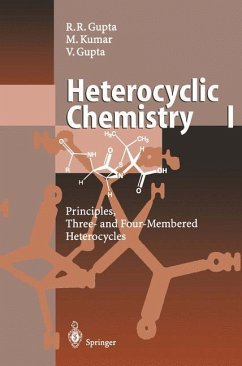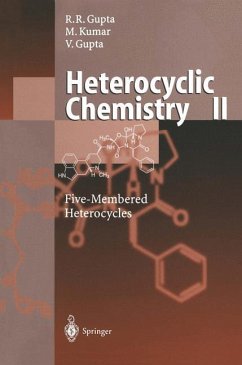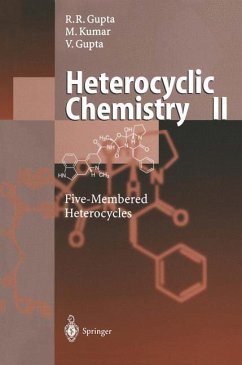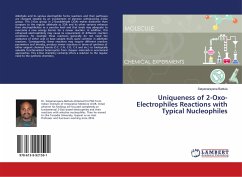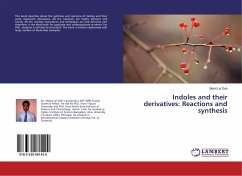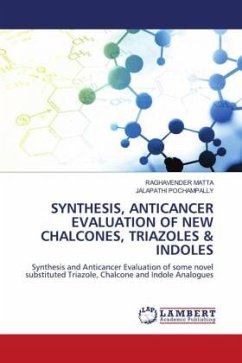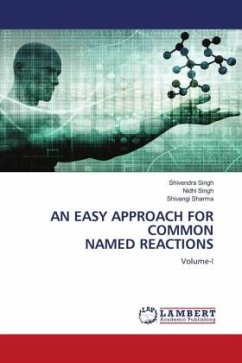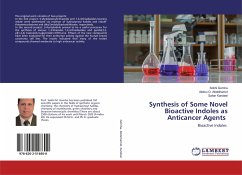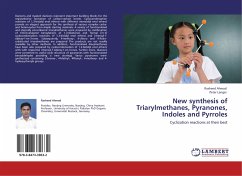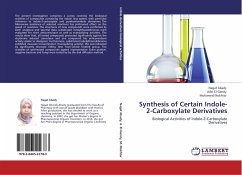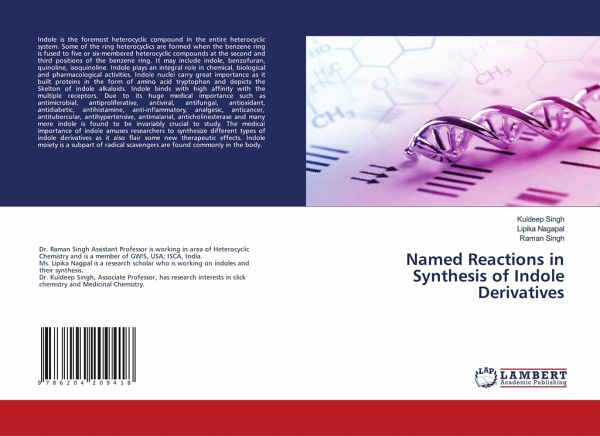
Named Reactions in Synthesis of Indole Derivatives
Versandkostenfrei!
Versandfertig in 6-10 Tagen
36,99 €
inkl. MwSt.

PAYBACK Punkte
18 °P sammeln!
Indole is the foremost heterocyclic compound in the entire heterocyclic system. Some of the ring heterocyclics are formed when the benzene ring is fused to five or six-membered heterocyclic compounds at the second and third positions of the benzene ring. It may include indole, benzofuran, quinoline, isoquinoline. Indole plays an integral role in chemical, biological and pharmacological activities. Indole nuclei carry great importance as it built proteins in the form of amino acid tryptophan and depicts the Skelton of indole alkaloids. Indole binds with high affinity with the multiple receptors...
Indole is the foremost heterocyclic compound in the entire heterocyclic system. Some of the ring heterocyclics are formed when the benzene ring is fused to five or six-membered heterocyclic compounds at the second and third positions of the benzene ring. It may include indole, benzofuran, quinoline, isoquinoline. Indole plays an integral role in chemical, biological and pharmacological activities. Indole nuclei carry great importance as it built proteins in the form of amino acid tryptophan and depicts the Skelton of indole alkaloids. Indole binds with high affinity with the multiple receptors. Due to its huge medical importance such as antimicrobial, antiproliferative, antiviral, antifungal, antioxidant, antidiabetic, antihistamine, anti-inflammatory, analgesic, anticancer, antitubercular, antihypertensive, antimalarial, anticholinesterase and many more indole is found to be invariably crucial to study. The medical importance of indole amuses researchers to synthesize different types of indole derivatives as it also flair some new therapeutic effects. Indole moiety is a subpart of radical scavengers are found commonly in the body.



